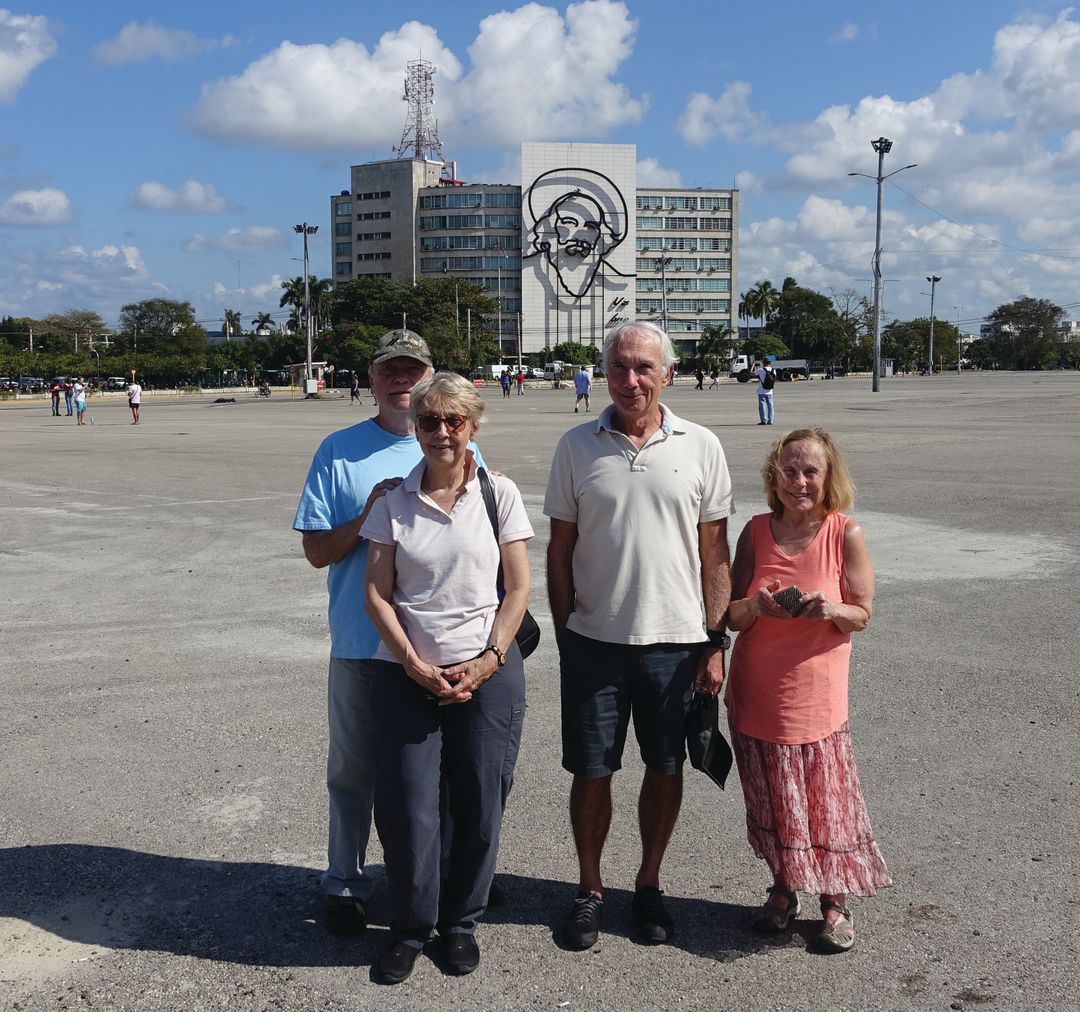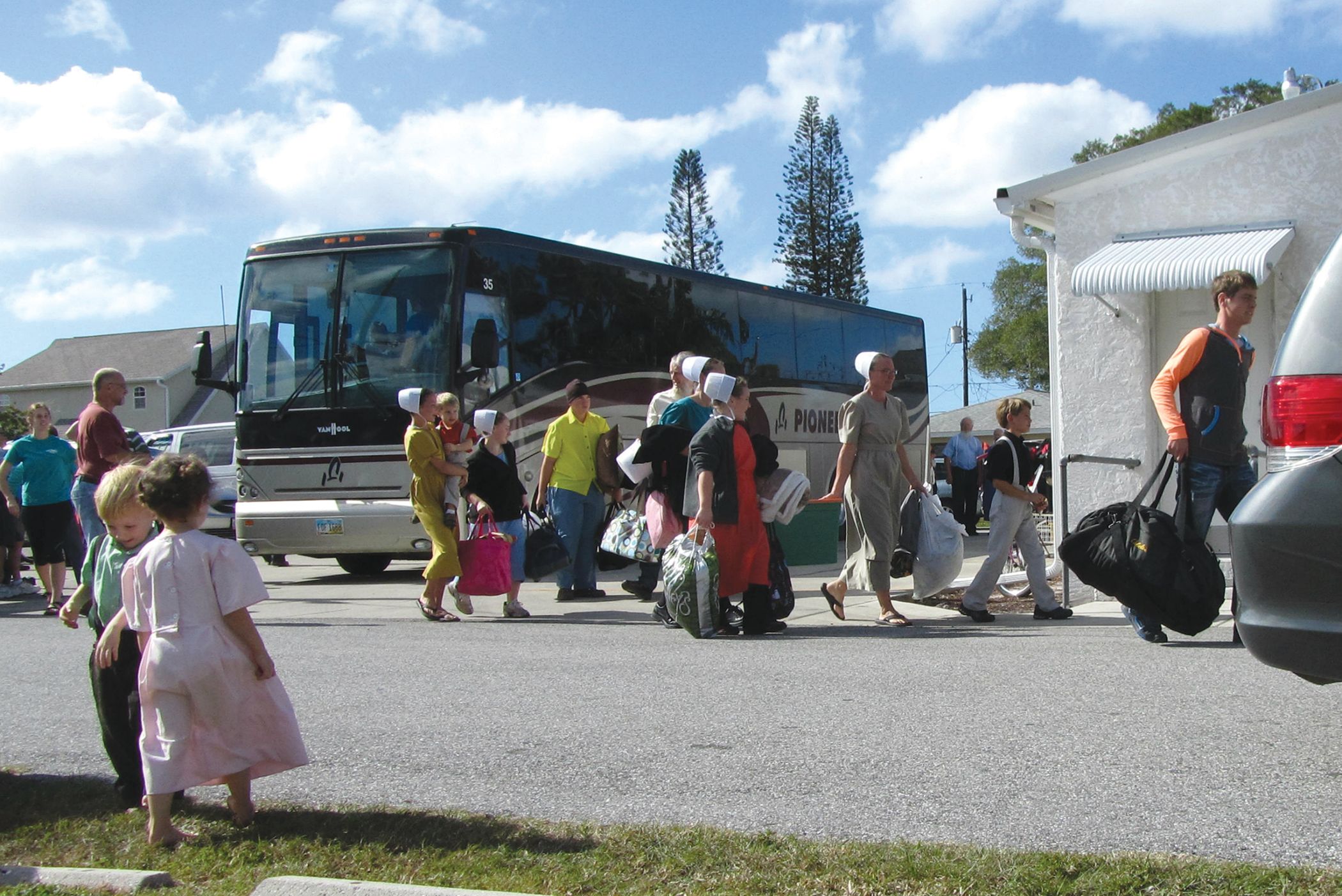Mr. Chatterbox Returns to Havana

Mr. C, at left, with siblings Patricia, Jack and Lucy in Havana, again.
Image: Courtesy Photo
Back in 1959, my family moved to Havana. The Revolution had just taken place and people were either fleeing the country or getting shot by firing squads. And we were moving there with everything we owned, planning to stay for the rest of our lives.
The reason was a sensational job offer for my father. He was now, suddenly, the president of the Cuban Electric Company. It was the largest company in Cuba, bigger even than the Cuban government. And since it was American owned, he was the very symbol of Yankee imperialism. The former president of the company was taking early retirement because angry mobs kept burning him in effigy.
We stayed in Havana until July 1960, when we fled overnight, leaving everything behind and our cars parked in the driveway. It was a dramatic time, and watching Cuba’s fall into the abyss of Communism was the central drama of our family’s life.
And now, 60 years later, we were going back. Me and my siblings—brother Jack and sisters Lucy and Patricia—decided the time had come to write the final chapter of our big adventure. Would we recognize it? Was there anything left of “our” Havana? Were the cars still in the driveway?
This being my family, price was important, so we booked one of those five-day cruises from Miami. You stop at Key West and the Bahamas, and then you get a day and a half in Havana. We figured this would be just long enough. We didn’t want to wallow in it, we just wanted to see it one more time. And hopefully not kill each other in the process, since the gathering of elderly siblings for a stressful event is a surefire plot for an Arthur Miller play.
We sailed into Havana’s harbor at dawn. The air was warm and heavy and the sky a pearly gray. I felt a jolt of recognition. This was the same time of day that I woke up back in ninth grade. Schools in Cuba started early back in those pre-air-conditioning days. I stared out at the skyline—another jolt. It had barely changed, still dominated by the Focsa Building, the 39-story apartment building that had the best movie theater in town.
All the cruise ships dock in Old Havana. This was definitely not part of “our” Havana; it was ancient, shabby, poor-ish. “Our” Havana was in the western suburbs, where the rich people lived. It was a world of private clubs and private schools, a Beverly Hills kind of place where people weren’t afraid to show off their wealth. Our neighbor’s chauffeur had a lime-green uniform, to match the color of their Cadillac.
We disembarked and found the Rum Museum, where we met our guide for the day, Abel Zaldivar. (You can find him on Facebook and I highly recommend him.) We briefed him on places we wanted to see and set off in a ’57 Chevy convertible. The old American cars are everywhere, and I kept an eye open for one of ours. They had to be here somewhere. My favorite, the ’57 Imperial, would be easy to spot, what with those incredible fins. It was the car I learned to drive in.
We headed west, through Central Havana (still pretty shabby), into Vedado, where the big hotels were—the Nacional, where we lived for a month while awaiting our furniture; the Hilton, now the Habana Libre, where my folks sat a table away from Hemingway at Trader Vic’s.
It was all very recognizable and pretty much intact. But something wasn’t right. What was it? Why did it feel so off?
We got to the big traffic circle with the Art Deco church we attended every Sunday and headed up the low rolling hills to Barandilla, our old neighborhood. Barandilla was part of a larger neighborhood called El Country Club, or “el Contree” for short. Here most of the homes were not walled and gated but set on large lawns with tropical vegetation, in the American style. The architecture was mostly midcentury modern with flamboyant tropical touches.
The first thing we came across was our school, Ruston Academy. Our fellow students were Americans and rich Cubans whose parents wanted them to have an American education so they could go to Harvard and Yale.
It had been renamed after a pair of brothers who had been killed fighting imperialism in the Congo and Bolivia, but otherwise looked remarkably the same. We jumped out of the car and began taking pictures until a guard came out and asked what we were doing. He was fascinated by our story and became very friendly, but he wouldn’t let us take any more pictures or go inside. It seems it is now a military school for girls. Indeed, the girls were looking out the windows, giggling and waving.
But where was our house? And what on earth had happened to our old neighborhood?
Some of the mansions were still there and kept up pretty well. These were the embassies. They each had a flag out front, none of which I recognized, leading me to believe they were all from rogue nations.
The homes that weren’t embassies ran down a sliding scale of decay, starting with places in fairly good condition but split up to house several different families. You could see chickens pecking around the scruffy yards and laundry hanging out to dry. Next came the homes in fairly bad condition. They might be missing windows and roofs. These seemed uninhabited, but you really couldn’t tell. Then came the ones that were literally falling apart, sometimes just a pile of rubble.
I remembered our address: Calle 190 Numero 2711. But it seems that some time ago they stopped using street numbers. And street signs, too. We tried to find it by dead reckoning or homing instinct, but it just wasn’t where it should have been. We could only imagine that it had been consumed by the enormous factory that certainly hadn’t been there before, an orange colossus that went on for blocks.
Well, that was depressing. We went to the next address on our list: Mrs. Amos’ house. She was the wife of the man my father replaced, the one the mob kept burning. She was a prominent Havana hostess, and her house was renowned for its style and elegance. I remember it well: a cool, dark living room, beautifully furnished, with glass doors leading out to a candlelit terrace surrounding the pool.
We finally found the right block, or thought we had. This time there were street numbers, but they followed no particular order. As we got out of the car to puzzle this out, a crowd gathered. We explained that we were looking for “la casa de la Senora Amos” who used to live here before the revolution and gave fancy parties.
The crowd was immediately seized by a desire to help. What did the house look like? When was this? More people arrived, who would then throw in their two cents, the way Cubans do, and in minutes the whole thing had turned into a sort of block party. A very old lady who lived around the corner might know something, and some kids were sent to fetch her. Then a guy named Felix insisted we look at his house—actually, his part of a bigger house—where he rented rooms to Italian tourists. He had decorated it like a nightclub, with Havana Club Rum posters and a stand-alone bar with a thatched roof.
Several men got together and organized our search. It was finally determined that the number we were looking for had to be “there.” They were pointing at an empty lot.
We never found “our” Havana. Still, we enjoyed the rest of our stay. We roamed Old Havana, where every bar and restaurant had its own band, and they were all terrific. We paid a nostalgic visit to the Nacional, now a crowded tourist attraction. We saw Che Guevara’s coffin, and a hooker tried to pick me up on Calle Obispo.
But something was missing, and after my third mojito I figured out what—rich people. Say what you will about the upper classes, they sure know how to brighten a city. They are the ones who keep their front doors painted and shined up, whose presence means good shopping and fine dining. Havana has none of that. All the rich people fled to Miami years ago and created a spectacular modern city that’s usurped Havana’s traditional role as capital of the Caribbean. And poor Havana, as fascinating as it is, has been reduced to a picturesque but rather pathetic time warp of a tourist attraction. So much history forgotten, misinterpreted or—like Mrs. Amos’s beautiful house—vanished from the face of the earth. They even filled in the swimming pool with dirt. You can go back again, but be careful—it might break your heart.


